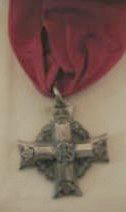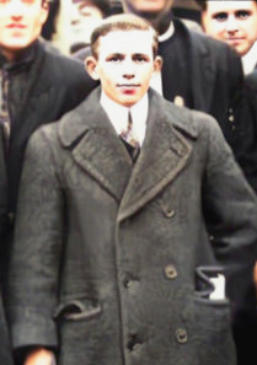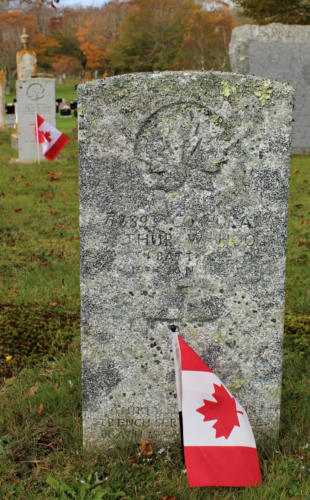
copyright © Wartime Heritage Association
Website hosting courtesy of Register.com - a web.com company
Wartime Heritage
ASSOCIATION
Remembering World War I
Yarmouth Connections
Name:
Arthur William Hood
Rank:
Corporal
Service Number:
67393
C Company, 25th Battalion,
Canadian Expeditionary Forces
Awards:
1914-1915 Star, British War Medal,
Victory Medal
Date of Birth:
April 5, 1890
Place of Birth:
Yarmouth, Yarmouth Co., Nova Scotia
Date of Enlistment:
November 18, 1914
Place of Enlistment:
Halifax, Halifax Co., Nova Scotia
Age at Enlistment:
24
Address at Enlistment:
Halifax, Halifax Co., Nova Scotia
Previous Military Exp:
Militia, Yarmouth
Height:
5 feet, 3 inches
Complexion:
Light
Eye Colour:
Blue
Hair Colour:
Light Brown
Occupation:
Electrician
Marital Status:
Single (at enlistment)
Religion:
Episcopalian
Next of Kin:
Samuel C. Hood (Father), Yarmouth, Nova Scotia
Date of Discharge:
May 31, 1919
Age at Discharge:
29
Date of Death:
January 16, 1927
Age:
36
Cemetery:
Mountain Cemetery, Yarmouth, Yarmouth Co., Nova Scotia
Grave:
South Eastern Corner, Plot 1356 (Family), Grave 4781
Arthur was the son of Samuel Campbell Hood (1849-1936) of Weymouth and Annie Ella (Powell) Hood
(1859-1932) of Freeport, NS, and the husband of Viola Seymour (1902-1920). Arthur’s siblings were
Stanley John Hood (1875-1937), Aubrey Sinclair Hood (1876-1932), Annie Violet Hood (1877-1947),
Ada Kinney Hood (1879-1941), Mabel Ruth Hood 1883-1957), Samuel Clifford Hood (1885-1938), and
Robert Sydney McIntosh Hood (1886-1974).
On May 20, 1915, Arthur sailed for the UK from Halifax, Nova Scotia aboard the SS Saxonia. After 4
months in the UK, Arthur embarked at Folkestone, in Kent, England and landed at Boulogne, France on
September 15, 1915.
Arthur served in France throughout 1915, 1916, 1917 and 1918. On July 14, 1916, Arthur wrote a
letter home to the parents of Private William Henry Neitz of Yarmouth who killed in action on July 5,
1916.
He participated in the barrage before the attack on Vimy Ridge in France, which took place in April
1917. Arthur was promoted to Corporal on May 21, 1917.
He make it through the war unscathed until 1918. During the last push by the Germans in the Ypres
salient his battery alone with others came under intense shelling and the men at his gun were taken
down by shrapnel. Arthur was wounded by artillery shrapnel to the head from enemy fire on the Arras
front on June 25, 1918.
He was transferred to the No. 10 General Hospital at Rouen in France and reported as being
dangerously ill on June 27th. His medical status was upgraded to seriously ill on July 5th. Some of the
shrapnel was removed at Rouen.
By July 9th he was doing better, and admitted to the King George Hospital on Stamford Street in South
East London. Transferred to the No. 16 Canadian Hospital in Orpington, Kent, England on August 13,
1918, he was subsequently moved to the No. 5 Canadian General Hospital in Kirkdale on February 27,
1919. He was invalided to Canada on March 11, 1919.
He departed the UK aboard the SS Araguaya. It arrived in Portland, Maine on March 22, 1919. He was
hospitalized at Camp Hill Military Hospital in Halifax after his arrival. He was discharged May 31, 1919,
at Halifax, Nova Scotia with demobilisation, as medically unfit for general service.
Arthur suffered from issues of equilibrium, dizzy spells, headaches, seizures, defective hearing in his
left year, and vision issues from his head trauma.
Living in Halifax in 1920 with his parents at 19 Granville Street, Arthur worked as the Secretary for
the Great War Veterans Association (GWVA), and later worked as a jeweller.
Corporal Arthur William Hood died January 16, 1927.
The Canadian War Graves Register records that his
death was attributable to military service, and Arthur
was interred in the family plot at the Mountain
Cemetery in Yarmouth, Nova Scotia.
The Memorial Plaque and Scroll were sent to his
father and the Memorial Cross was sent to his mother.
Arthur William Hood






- World War I - Menu
- WWI Stories and Articles
- Photos - Yarmouth Soldiers
- Selection of World War I Songs
- WWI Casualties of Yarmouth, NS
- Those Who Served - Yarmouth, NS
- WWI Casualties Digby Co. NS
- WWI Casualties Shelburne Co. NS
- Merchant Mariners (1915) Yarmouth, NS
- Canadian Forestry Corps - Non Yarmouth Birth/Residence Enlistments
- US Draft Registry - Yarmouth NS Born


- World War II - Menu
- WWII Stories and Articles
- Telegraphist Air Gunners
- WWII Casualties of Nova Scotia
- US Casualties with NS Connection
- Far East/Pacific Casualties with NS Connection
- Merchant Navy Casualties Nova Scotia
- Nova Scotia WWII Casualties Holten Canadian War Cemetery
- D-Day Casualties - Nova Scotia
- CANLOAN Program Casualties - Nova Scotia
- Battle of the Bulge Casualties - Nova Scotia
- WWII Casualties Yarmouth NS
- Yarmouth Casualties - RCAF RAF Canadian Army WWII
- Yarmouth Co., Marriages WWII
- Casualties Non-Born/Residents with Connection to Yarmouth Co., Nova Scotia.
- WWII Casualties Digby Co., NS
- Non-Nova Scotian WWII Casualties Buried in Nova Scotia
- WWII RCAF Casualties Aged 16-18
- Brothers/Sisters Who Served - World War II














